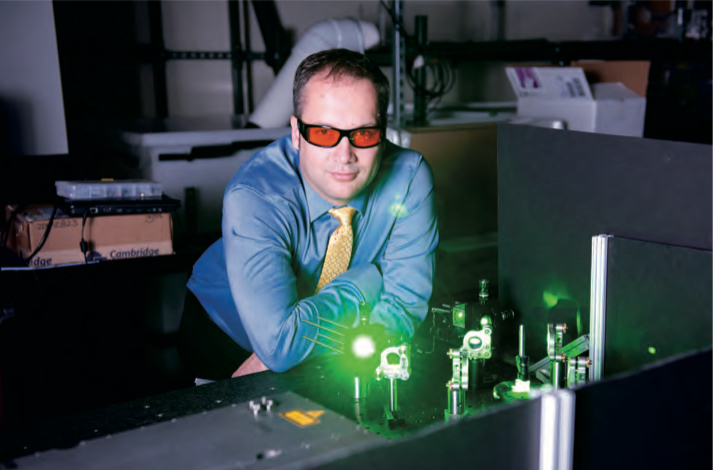Dr. Philippe Bardet: A Quick Start

Professor Philippe Bardet of the Department of Mechanical and Aerospace Engineering is an experimentalist in the field of fluid dynamics, the study of how liquids and gases behave in motion under the action of internal and external forces.
Bardet studies fluid behaviors to better predict them, so others can apply his insights to improve the design of a myriad of tools and structures on which we depend. For example, with a better understanding of the flow of air or water around airplane wings or ship hulls, engineers can design wings or hulls that result in less drag. Less drag leads to greater fuel efficiency. Or consider nuclear reactors. The water that flows through and cools a nuclear reactor core is critical to the reactor’s safe operation. The more we understand the variations in the flows, the better we can design the reactor cooling and safety systems.
These are just two applications to the many projects on which Bardet and his research group are working in their experimental laboratory. Despite the fact that he “got the keys to the lab less than two years ago,” Bardet has quickly built several large experimental facilities, and his group’s work is already getting the attention of external funding agencies.
Bardet concentrates on multiphase flows—the interaction of liquids with gases, and the transfer of heat and mass between the two phases—and on the interaction of turbulence and stratified fluid layers. It was his work on multiphase flows that opened the door to his most recent research. “It got the attention of the program managers and they entrusted us with this big project,” he recalls.
This “big project” is an $860,000 U.S. Department of Energy (DOE) grant and the opportunity to collaborate with scientists at Argonne National Laboratory and the French Alternative Energies and Atomic Energy Commission. Bardet and his SEAS colleagues, Professors Elias Balaras and Majid Manzari, will use the grant to devise a model to simulate the impact of earthquake-induced fuel rod vibrations inside a nuclear reactor. Why is that important? Bardet explains, “By develop- ing better predictive tools, we can better refine the safety limits of a particular reactor.”
To better predict and model these behaviors, Bardet’s research group is building a sort of vertical water tunnel on GW’s earthquake simulator, or “shake table,” and they plan to capture the fluid flow data as the water flows through the tunnel at very high speeds while they shake the whole structure. They will capture the data using instrumentation they have developed that is “customized to the applications and allows measuring phenomena that cannot be captured with commercially available instruments,” Bardet asserts.
But the customized instrumentation is just one unique feature of the project. “On fluid-structure interaction, as far as I know, we’re the first doing fluid velocity measurements on a shake table,” says Bardet. “We’re also going to measure the full coupling of the fluid and the structure and how they respond together, which has never been done for this application.”
In a related development, Professor Bardet’s group also will work under a recently awarded $800,000 DOE grant to develop new laser diagnostics for advanced nuclear reactors.

